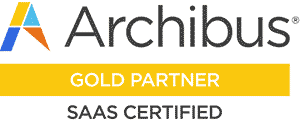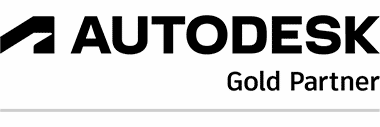
If you’ve ever wondered how AI works in Autodesk’s AEC (Architecture, Engineering and Construction) software then read on. In this blog post we’ll take a look at how we’re advancing AI in our software, and how it supports improved workflows, more informed decisions, and better project outcomes for AEC teams.
At Autodesk, we’ve invested in AI for the past ten years because we recognize its transformative power for the industries we serve. Across AEC disciplines and project types, Autodesk’s advancements in AI are helping customers tackle complex challenges and harness new opportunities in their projects–not just by increasing productivity, but by giving them the tools to be even more ambitious and creative.
Recent releases of popular tools like Midjourney allow AEC professionals to prompt, generate, and refine vast multitudes of ideas, spurring the imagination forward. The focus in our product teams takes a complementary approach: how can you use AI to translate imagination to reality? We invest in AI to improve the design, documentation and construction workflows that help AEC professionals turn their ideas into the buildings, infrastructure, and communities we all use and inhabit.
Our focus is on advancing Autodesk AI in three main areas:
- Analysis
- Augmentation
- Automation
Our solutions use a combination of AI technologies, mostly rule- and learning-based systems. No matter the type of AI technology, we believe it should always support the user, to help improve your workflows and optimize for the best outcomes. AI is simply a tool that’s very good at completing specialized tasks. When we look at the toolbox used by AEC professionals, Autodesk AI is an evolution of these tools which lends a helping hand, like a digital assistant, to make light work of normally time-consuming tasks and help you get where you want to be faster.
What’s important to keep in mind is that the AI is always steered by the user. You’re the one who decides how you want to combine manual and automatic adjustments to achieve your targeted outcomes, whether it’s for design and feasibility, compliance or buildability. You’re in the driver’s seat and the final decisions are always yours.
Now, let’s take a look at some examples of how AI is integrated into our AEC software and how it helps users improve their way of working:
Analyze: immediate insights, earlier
What are the consequences of a design change? Where is there room for improvement? These questions can be answered even faster with predictive AI-powered analysis tools which analyse project data to provide quick, actionable insights to AEC professionals. They’re intended to help you better understand–and design for–the results you want to achieve from the very earliest phases.
Machine learning speeds up the analysis process because, unlike conventional computational analysis, it can make accurate predictions–that were impossible before– based on previous simulations. This means you’ll get feedback in seconds, allowing you to assess and iterate your designs faster and more fluidly. Forma’s rapid analyses predicts results for noise and wind conditions and operational energy for early-stage design and planning, helping AEC teams design the healthy, sustainable communities they envisioned for their clients. Think of it this way: the rapid analysis offers an almost instant, educated guess which is comparable in accuracy to a full analysis thanks to machine learning. Use it like a pre-analysis for rapid experimentation and complement it with a full analysis for more detailed verification.
When it comes to drainage design, stormwater analysis is a must for the design of resilient environments that can weather extreme conditions. With Autodesk InfoDrainage’s Machine Learning Deluge Tool, drainage designers can quickly generate responsive flood maps without having to rerun complex computational simulations. The tool analyzes and predicts water channelling and ponding, giving live feedback to help you complete a site analysis faster. This enables more informed decision making in the drainage design process whether it‘s locating optimal areas for stormwater controls or helping infrastructure owners and developers avoid problem areas when siting their structures.
Augmentation: enhancing exploration and experimentation
As many of you know, exploration, experimentation and iteration are at the heart of the design and make process–and now it gets a boost with AI and data. Augmentation features enhance the creative process by widening the scope of exploration while improving the speed and accuracy of iterations, helping users find innovative solutions faster.
These features have been game-changing for data-driven ideation and optimization across different project phases. Starting with massing, Forma’s initial set of generative design tools helps you answer the question ‘what if…?’ in a fraction of the time it normally takes when assessing a site. You can rapidly generate layout options, using these quick massing studies to easily gauge a site’s feasibility. Key area metrics help you monitor targets and consider any trade-offs. Then, send your generated proposal to Forma’s rapid analyses (see Analysis section) to get a first impression of wind and noise conditions and operational energy. For car parking design, normally a thankless manual task, Forma’s parking tool happily takes this over. It lets you efficiently generate parking options for enclosed areas according to parameters such as lot dimensions, aisle width, and number of stories. For outdoor parking, you can leverage the optional TestFit parking extension, a third-party tool. Combining insights from both tools gives you a more complete overview of parking needs already at the early stage, helping you create a more accurate parking strategy, faster.
Generative Design in Revit gives designers a way to model the most optimal solutions by defining desired design outcomes, considered alongside competing goals and constraints. For example, how can you maximize the number of seats in a new stadium while ensuring each spectator has good sightlines to the field? How can you configure desk layouts in an open office to provide optimal occupancy while addressing egress and circulation? Leveraging what’s known as a genetic algorithm, Generative Design in Revit assists designers in quickly turning complex, multivariable design challenges into viable design directions for further development.
Automation: reducing tedious tasks for more creativity
Fewer tedious, repetitive tasks and more time for creative exploration and problem-solving: this is the potential of automation to help you do more of the high-value design and make work that you love doing and excel at. Automation features have the potential to unlock more streamlined, efficient ways of working, speeding up steps in a workflow that traditionally require significant manual input and effort.
Automation features anticipate the user’s next move to help them complete their task faster. In AutoCAD, Markup Import and Markup Assist help drafters iterate faster. Markup Assist uses machine learning to identify markups on print or digital formats and help you incorporate changes easier and faster. When it comes to replacing block references, AutoCAD Smart Blocks: Replacement suggests similar blocks from your block library for you to choose from. AutoCAD Macro Advisor generates macro insights based on your unique command usage.
Another valuable automation feature is Revit’s Steel Connection Automation which assists in the design of steel structural systems, helping structural engineers model design intent faster and estimate cost and constructability with greater accuracy, especially when facing bid deadlines. Reducing a normally repetitive task in the structural engineering workflow, this capability allows you to use rules-based connection libraries to efficiently identify, place, and replace steel connections.

For sewer asset inspections, we’re exploring the integration of VAPAR’s AI image technology into Info360 Asset. VAPAR technology automatically flags problematic issues in pipes, saving operators hours of watching tedious sewer line inspection videos while significantly reducing capital expenditure costs. We will share more details in the near future.
Like how a word processor predicts words to complete your sentence, Prescriptive Scripting in Dynamo (also known as Node Autocomplete) helps you create your scripts more quickly and accurately by predicting the upcoming nodes based on what you’ve written previously.
In the bigger picture, AI advancements in Autodesk’s AEC software are there to help enhance your creativity and decision-making, enabling you to find new solutions to challenges faster and more sustainably. Autodesk AI is an evolution of your AEC toolbox that thinks along with you and supports more fluid workflows for your project teams; throughout the process, you as the user remain in the driver’s seat. At Autodesk we are committed to the thoughtful, responsible development of AI to address our customers’ needs and are actively researching, developing, and acquiring additional AI technology so that together we can design and make a better world for all.



